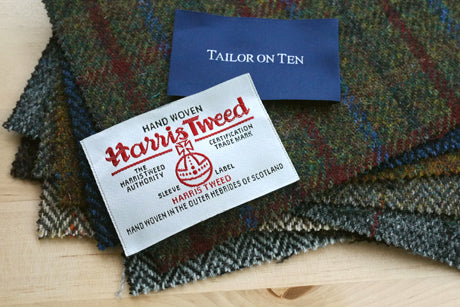Linen: The Ultimate Summer Fabric
Posted: Mar 24 2015
Linen may not be the first thing that pops into your head when you think of tailored clothing, but for summer wear, it’s a hard material to beat. In fact, that’s true both figuratively and literally, as linen is both cool to wear and the strongest natural textile fibre available.

Tailor On Ten sources some of the best linen in the world, mainly from Ireland and Japan. Linen is derived from the flax plant and has been cultivated for thousands of years. In fact, the first evidence of linen textiles dates back 36,000 years. As a testament to its strength, the linen wrappings uncovered in Ramses II’s tomb were perfectly preserved - 3,000 years later.
Flax is the only textile plant that grows in Europe, and in the 12th century Ireland came out as the leader in linen production, earning Belfast the nickname Linenopolis. Irish linen is sourced from the best European plantations, then spun, woven and finished in Ireland to the high standards of the Irish Linen Guild - whose logo is on every Irish linen shirt we produce. Thanks to their long-standing heritage, Irish linen is generally considered the best in the World.

What makes linen so great for hot summer days is that it’s naturally heat-regulating. By absorbing moisture without feeling damp, linen transfers heat away from the body, leaving the fabric with a dry, cool touch. Linen has a distinct, slightly wrinkled look that is charmingly laissez-faire and evocative of lazy summer days along the Cóte d'Azur.
Linen one is of the few fabrics that are stronger when wet, meaning after wash the hanger will not stretch the material. While sunshine is notorious for fading the color of cotton, white linen appropriately fares best in sunshine, so dry your white linens outside to ensure they retain their brilliance. As you wash and wear linen, it acquires a relaxed, washed look and gets softer with time. Linen has a remarkable natural resistance to dirt and stains, which, combined with no lint or pilling tendency, makes high quality linen a great investment.
 Other benefits of linen include its antiallergic properties - it tends not to irritate skin and does not harbor dust or detergent residue - and its environmental sustainability, requiring very little water and fertilizer. Sometimes linen has slubs, little irregular ‘knots’ along the yarns, which, rather than being considered an imperfection, gives the fabric more character.
Other benefits of linen include its antiallergic properties - it tends not to irritate skin and does not harbor dust or detergent residue - and its environmental sustainability, requiring very little water and fertilizer. Sometimes linen has slubs, little irregular ‘knots’ along the yarns, which, rather than being considered an imperfection, gives the fabric more character.
Our range of Japanese linen is mainly focused on the natural linen colours and typically used for suiting. Our Irish linen on the other hand, embraces the colourful spirit of the Emerald Isle, with strong solids and striking plaids. The visually stunning dyes combined with the highest crafting standards results in a shirt that is truly a privilege to wear.
The texture of linen makes a great blazer, in which case we’d recommend skipping the tie, but picking up a colorful pocket square for extra style points. If your interest has been piqued, find out more about linen production, check out our linen shirts and jackets here.











